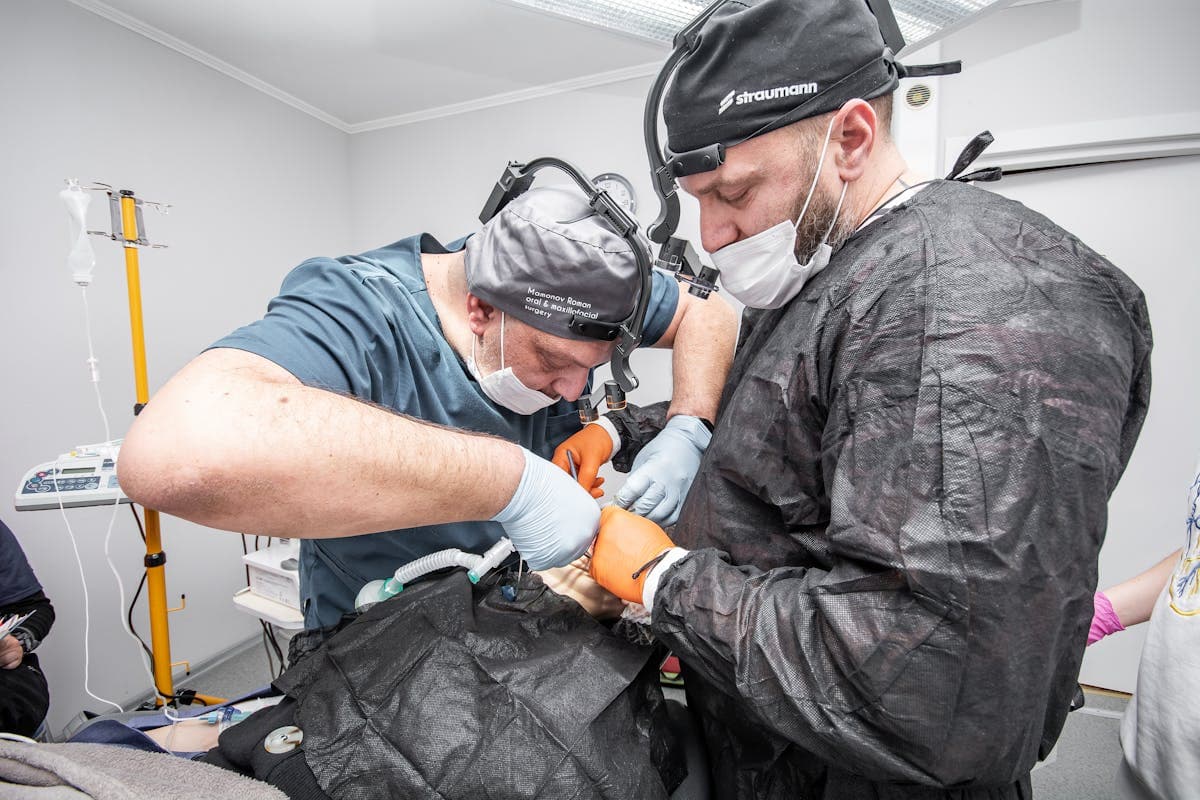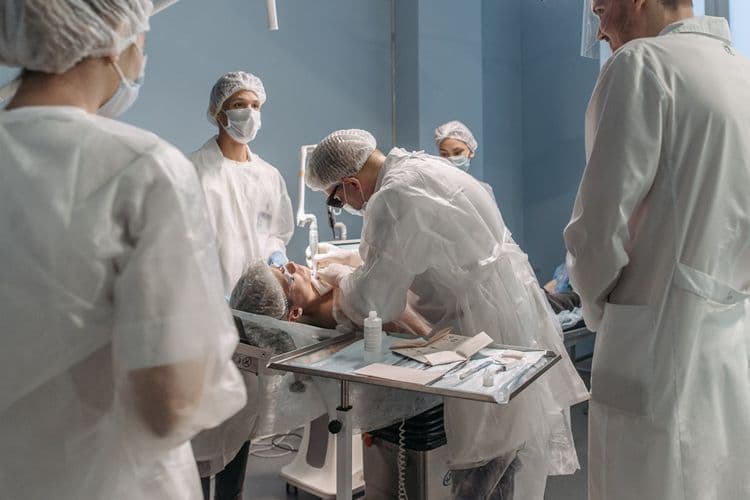Orthognathic surgery, a prominent facet of maxillofacial surgery, presents a compelling intersection of aesthetics and functionality. This procedure, primarily aimed at rectifying deformities in jaw and facial structures, impinges on multiple aspects of a patient’s life, from chewing and speech to overall facial harmony. However, the complexities of the process, from candidate selection to post-operative care, necessitate a deeper exploration. The potential risks and complications, juxtaposed with the transformative benefits, make it a topic of significant interest and discussion in the domain of oral and maxillofacial surgery.
Understanding Orthognathic Surgery
What exactly is Orthognathic Surgery? It is a specialized branch of maxillofacial surgery that corrects conditions of the jaw and face related to structure, growth, sleep apnea, TMJ disorders, malocclusion problems owing to skeletal disharmonies, or other orthodontic problems that cannot be easily treated with braces. Precision surgical techniques are employed to reposition the maxilla, mandible, and dentoalveolar segments to achieve an ideal balance, both functionally and aesthetically. Patient expectations play an essential role in the success of this surgery, as it often involves a significant recuperation period and potential changes in facial appearance. This procedure is highly individualized, taking into account each patient’s specific condition, needs, and desired outcomes.
Indications for Orthognathic Surgery
The selection of suitable candidates for Orthognathic Surgery is a critical step, focusing on specific conditions and criteria. This involves identifying common conditions that necessitate the intervention, such as severe jaw misalignment or malocclusion. Additionally, the procedure selection is guided by strict criteria to guarantee ideal patient outcomes and mitigate potential complications.
Identifying Orthognathic Surgery Candidates
While orthognathic surgery offers a potential solution to a range of severe jaw and facial abnormalities, it is essential to accurately identify suitable candidates for the procedure. The process begins with a thorough surgical evaluation, which includes a detailed physical examination and a review of the patient’s medical and dental history. The practitioner will also conduct a detailed patient assessment, focusing on the severity and type of the deformity, the patient’s overall health status, and the expected quality of life improvement post-surgery. The patient’s psychological readiness and commitment to the lengthy recovery process are also important considerations. Ultimately, a multidisciplinary approach involving surgeons, orthodontists, and psychologists is vital in identifying the ideal orthognathic surgery candidates.
Common Orthognathic Surgery Conditions
Building on the process of identifying candidates for orthognathic surgery, it is necessary to highlight the typical conditions that make this procedure a viable option. The most common condition is malocclusion or misalignment of the jaws. This can lead to problems with chewing, speaking, and maintaining oral hygiene. In addition, conditions such as prognathism (protrusion of the jaw) or retrognathism (recession of the jaw) can disrupt facial symmetry, causing aesthetic concerns and functional issues. Temporomandibular joint disorders, often resulting from jaw misalignments, may also necessitate orthognathic intervention. For patients with sleep apnea, orthognathic surgery can be instrumental in opening airway passages obstructed by irregular jaw structure, thereby improving breathing during sleep.
Procedure Selection Criteria
Given the complexity of orthognathic surgery, meticulous selection criteria are essential to guarantee patient safety and successful outcomes. These criteria involve an amalgamation of medical, dental, and psychological factors. A detailed surgical technique comparison is instrumental in matching the patient’s unique case with the most suitable procedure. The patient’s age, overall health, and specific malocclusion type are primary considerations. Additionally, the severity of the skeletal discrepancy and the patient’s aesthetic concerns are taken into account. Psychological readiness is gauged to ascertain the patient has realistic expectations and can cope with the recovery process. Consequently, the patient selection criteria for orthognathic surgery underscore a holistic approach, prioritizing both functional improvement and patient satisfaction.
Pre-Surgical Orthodontic Treatment
Before undergoing orthognathic surgery, a patient typically engages in pre-surgical orthodontic treatment. This phase is essential to guarantee the correct orthodontic alignment of the teeth prior to the surgical procedure. The pre-surgical assessment involves an extensive examination of the patient’s dental and skeletal condition, which includes radiographic evaluations and plaster models of the patient’s jaws.
The orthodontist aims to align the teeth and create a balanced occlusion for the surgical procedure. This alignment optimizes the patient’s postoperative functional and aesthetic results. It’s worth noting that the duration of this pre-surgical orthodontic treatment varies among patients, depending on the complexity of the case. However, it generally spans between 12 to 18 months. The patient’s commitment to this preparatory phase is critical for successful orthognathic surgery.
The Surgical Procedure Explained
Having effectively completed the pre-surgical orthodontic treatment, the patient is now prepared for the subsequent phase - the orthognathic surgical procedure itself. This operation is meticulously planned using sophisticated surgical techniques and advanced digital technologies. The surgeon makes precise cuts in the jawbones and realigns them to improve function and appearance. The bones are then secured using screws and plates, ensuring stability. Throughout the procedure, patient safety and comfort are crucial. A general anesthesia is administered, and essential signs are monitored continuously. Post-procedure, the patient’s recovery timeline is closely tracked, with regular check-ups scheduled to assess healing progress. The duration of recovery can vary based on the complexity of the surgery and individual patient characteristics.

Post-Operative Care and Recovery
Once the orthognathic surgery is completed, the focus shifts to post-operative care and recovery, a period of crucial importance in the overall treatment process. Pain management is paramount in this phase, typically involving analgesics to alleviate discomfort and inflammation. Frequent evaluation of the patient’s pain levels and medication adjustments are necessary to guarantee ideal pain control. The patient’s diet modifications are also an essential part of recovery. A liquid or soft food diet is often recommended initially to prevent unnecessary strain on the surgically corrected areas. Gradual introduction of more solid foods can follow as healing progresses. Proper post-operative care enhances the recovery process, mitigating complications, and promoting an effective return to normal functions.
Risks and Complications Involved
As we progress in our examination of orthognathic surgery, it is essential to highlight potential risks and post-operative complications. Inherent in any surgical procedure are common risks, which may include infection, excessive bleeding, and adverse reactions to anesthesia. Additionally, we must consider specific post-surgery complications, which can encompass issues such as prolonged pain, difficulty in jaw movement, and changes in facial sensation.
Common Surgical Risks
Although orthognathic surgery is a common procedure with a high success rate, it is not without risks and potential complications. One such complication that warrants serious attention is surgical infection. Despite rigorous sterilization techniques, bacterial invasion may occur, leading to localized or systemic infection. This can manifest as swelling, fever, and increased pain post-operatively. Additionally, patients may experience anesthesia risks, ranging from mild nausea and vomiting to severe complications like allergic reactions, respiratory distress, or even cardiac arrest. These risks are greatly influenced by the patient’s overall health status, presence of co-morbidities and reaction to anesthetic agents. Consequently, a thorough preoperative evaluation and meticulous intraoperative management are critical to mitigate these risks.
Potential Post-Surgery Complications
Following the surgery, patients are not entirely free from potential complications. Despite the utmost care taken during orthognathic procedures, there may be risks associated with the healing process. Complications can be both minor, such as swelling or discomfort, and major, including infections or nerve damage.
Infection prevention is paramount, and patients are often prescribed antibiotics to reduce this risk. Furthermore, maintaining good oral hygiene can further aid in preventing infections. The healing process, while typically straightforward, can be complicated by factors such as smoking, poor nutrition, and certain medical conditions. Regular follow-ups with the surgeon are essential to monitor recovery and promptly address any complications that may arise. Consequently, patients should be aware of these potential post-surgery complications.
Benefits of Orthognathic Surgery
While orthognathic surgery is primarily associated with correcting dental and facial irregularities, its benefits extend beyond aesthetic enhancements. Patients often experience significant functional improvements, including enhanced chewing efficiency, optimized speech articulation, and relief from temporomandibular joint (TMJ) discomfort. Additionally, correcting skeletal discrepancies can alleviate obstructive sleep apnea, providing profound health benefits. The surgery can also rectify malocclusion, thereby preventing accelerated tooth wear and periodontal problems. On the aesthetic front, it offers harmonization of facial features, providing an improved profile and symmetry. Consequently, orthognathic surgery serves as an all-encompassing solution, offering not just a superior cosmetic outcome, but also substantial functional benefits, thereby improving the overall quality of life for patients.
Real-Life Success Stories
In the domain of orthognathic surgery, patients’ narratives often illuminate the transformative power of this medical intervention. Patient testimonials are replete with accounts of transformative journeys, from debilitating dental discomfort to complete oral functionality and aesthetic satisfaction. These success stories underscore the surgical proficiency and the patient-centered approach characteristic of orthognathic procedures. They highlight the dramatic improvement in masticatory performance, facial symmetry, and overall self-esteem. Furthermore, patients frequently report a significant enhancement in their quality of life, both socially and professionally. Despite the intricate nature of the procedure and the post-surgical recovery period, the positive outcomes, as reflected in these real-life success stories, substantiate the merits of orthognathic surgery in rectifying severe maxillofacial deformities.
Frequently Asked Questions
Does Insurance Typically Cover Orthognathic Surgery?
Insurance coverage often depends on the specific policy and whether the surgical requirements align with medical necessity. Hence, it’s essential to consult with your insurance provider to understand the extent of coverage for such procedures.
How Can I Find a Skilled Orthognathic Surgeon?
Identifying a skilled surgeon requires researching their credentials and experience, including their training, board certifications, and specializations. Additionally, reading patient reviews can provide valuable insight into their surgical skill and patient care approach.
Are There Alternatives to Orthognathic Surgery for Treating Jaw Misalignment?
Yes, there are non-surgical alternatives for treating jaw misalignment. Dental braces are a common method used to correct alignment issues. However, the efficacy of these alternatives depends on the severity of the misalignment.
Can Orthognathic Surgery Affect My Ability to Speak or Eat?
Yes, post-operative effects may temporarily impact speech and eating. However, with proper recovery and therapy, many patients experience speech improvement and overcome initial eating challenges associated with the healing process.
What Is the Average Age of Patients Undergoing Orthognathic Surgery?
In relation to patient demographics and surgical timing, the average age of individuals undergoing this procedure typically falls within the young adult age range, primarily 18-30 years, due to ideal healing capabilities and facial growth completion.


